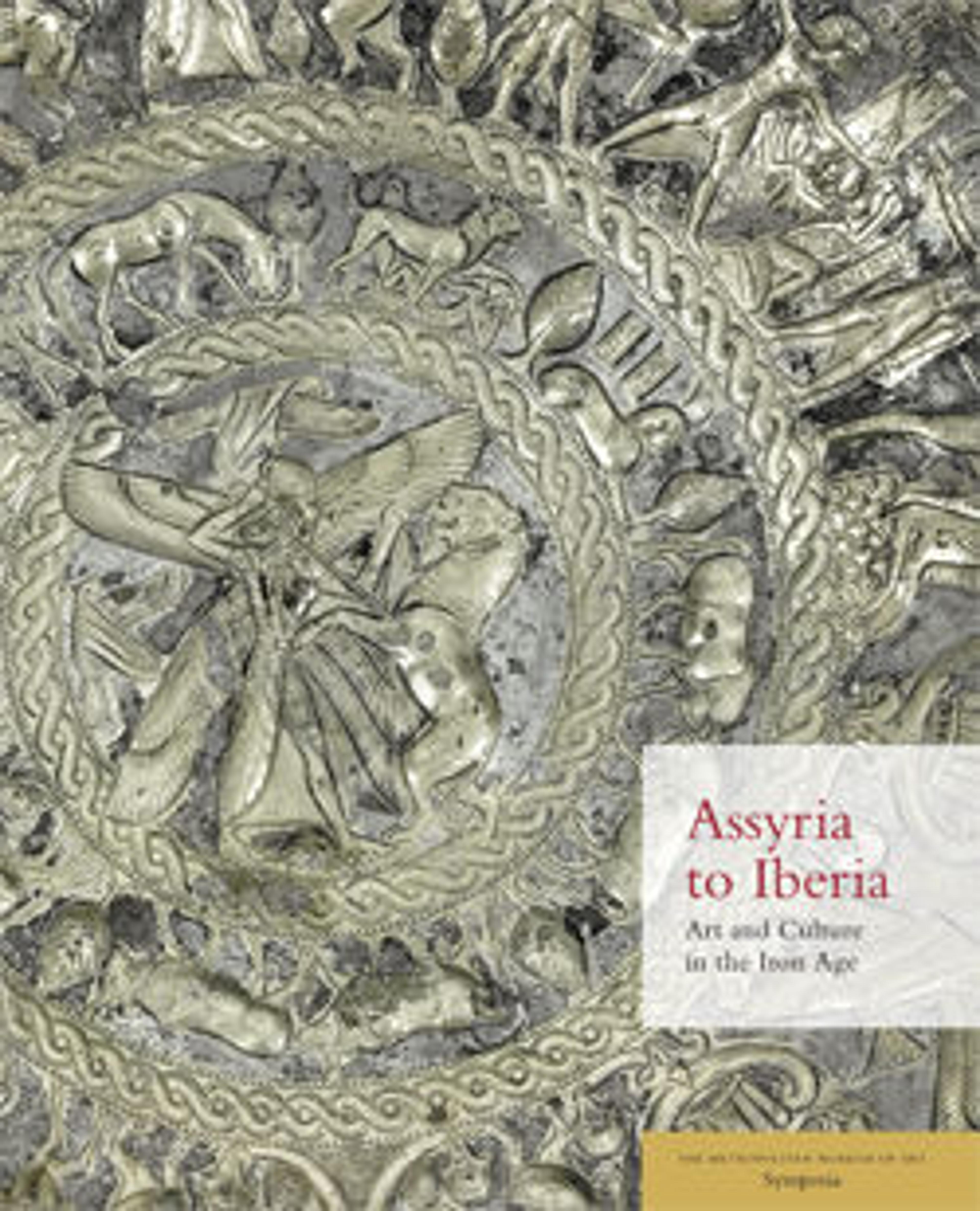Fragmentary silver bowl
The focus of the banquet scene in the outer frieze is an offering table with a bowl probably filled with fruit. It is flanked by two reclining figures. On the right is a figure wearing an Egyptian crown, above whom an inscription may signify "king." Behind him appears a flute player. On the left of the table is a "queen" with an Egyptian wig, above whom are letters that certainly include the prefix "Cypro-" and give her name or title, perhaps Kypromedousa, "protectress of Cyprus." Behind her, from right to left, come three musicians, a large amphora, a table with vases and ladles, and three women bearing offerings: bowls, the legs of sheep or goats, and trussed geese. The banquet iconography, combining Egyptian and Phoenician features, indicates that the bowl would not have been a temple dedication.
Artwork Details
- Title:Fragmentary silver bowl
- Period:Archaic
- Date:ca. 710–675 BCE
- Culture:Cypriot
- Medium:Silver
- Dimensions:diameter 6 7/8 in. (17.5 cm)
- Classification:Gold and Silver
- Credit Line:The Cesnola Collection, Purchased by subscription, 1874–76
- Object Number:74.51.4557
- Curatorial Department: Greek and Roman Art
More Artwork
Research Resources
The Met provides unparalleled resources for research and welcomes an international community of students and scholars. The Met's Open Access API is where creators and researchers can connect to the The Met collection. Open Access data and public domain images are available for unrestricted commercial and noncommercial use without permission or fee.
To request images under copyright and other restrictions, please use this Image Request form.
Feedback
We continue to research and examine historical and cultural context for objects in The Met collection. If you have comments or questions about this object record, please contact us using the form below. The Museum looks forward to receiving your comments.
